Remembrance – Captain Allison Gould Smith

Yesterday we remembered Horbling man, Allison Gould Smith, who died on the 18th April 1918 whilst serving with the 7th Battalion Loyal North Lancashire regiment.
Allison was born in the winter of 1890, on December 3rd, in Horbling to George Smith, a solicitor born in Horbling in 1859 and his wife Helen Phyllis Allison, born in Louth in 1861.
The couple were married in Louth in 1888 making their home in Horbling. Between 1889 and 1900 the couple had 4 children :-
* George Henry Gould Smith, 1889, Horbling
* Allison Gould Smith, 1890, Horbling
* Helen Phyllis Gould Smith, 1892, Horbling
* Francis Gould Smith, 1900, Horbling
On the night of the 1891 census we find a four month old Allison living with his parents in Horbling and his older brother George. His father is a solicitor and is listed as an employer.
Ten years later in 1901 we again find them in Horbling, this time the house is now identified as being 2 houses away from Sunnyside. George and Helen now have 2 sons and a daughter and also in the household we have a cook, parlour maid and a nurse. George is a solicitor and still an employer.
If we jump on another 10 years to 1911, living at 28 Dorset Road in Bexhill we can see that a retired school master by the name of John Neve Allison aged 34 a single man that has two nephew’s with him. George and Allison are in his household along with a housekeeper, Emma Lidgand from Binbrook Lincolnshire. The two Smith brothers are now 22 and 20 and have both given their occupation as students. Looking once again at the surname of Allison, we now confirm that this is the reason for Allison’s unusual christian name.
On later CWGC paperwork we find that Allison Smith was educated at both Winchester College and also Magdalene College, Cambridge.
We do not have access to the official military records for Allison but, as with 60% of all WW1 records, it is most likely that they were destroyed in a warehouse fire in he blitz. Therefore the only way to piece together his military history is from single entries in other related military documents.
Allison’s Medal card shows that Pte Smith attended Officer Training Corps. Possibly starting or ending on the 11th September 1914 and then upon passing out as 2/Lieut, Smith is listed as serving with the 7th Battalion Loyal North Lancs, eventually disembarking in France on the 17th July 1915.
It is most likely that he trained and then was posted immediately to the 7th Battalion.
On the 23rd June 1915 the 7th Battalion, as part of the 19th (Western) Division, was inspected by King George V at Tidworth. Advance parties then left for France on the 11th July.
The 7th Battalion were placed on trains to Folkestone on the 17th July at 3.55pm and after arriving embarked at 8.55pm. They arrived in Boulogne at 11pm and were marched 2 miles into the rest camp.
For the next week they spent most of their time training and daily route marching from the Calais area, spending time at Watten, Moulle, Walton Chapel on their way.
In Patit Courdois on the 26th, after a route march of 6 miles. General Sir Douglas Haig visited the Bn HQ at 3.15pm.
By the end of the month, as well as the daily route marches, they had also received instructions in the use of entrenching tools and the fitting of smoke hoods.
By the night of the 30th they were in Paradis and were due to be inspected by the Corps Commander on the 1st August. The final note in the Battalion Diary for July notes “Promotions for Officers”
We are lucky that Allison is an officer and therefore his name appears in the list of officers in the Appendix of the July diary while at Tidworth, he is listed as a 2/Lieut.
The whole of August was spent in trying camps at Paradis, Vielle Chapelle and Le Sart. During this time the officers attended lectures and the men were trained in all kinds of equipment, trench and hand motors, machine guns, bombing, trench warfare etc. At the end of August the Battalion became part of the army reserves.
September 1915 saw the battalion art in Les Lobes, behind the lines providing working parties for filing sandbags, laying telephone wires and digging communications trenches. The Battalion reported their first casualties on the 8th September when 4 men from D company, who had been part of the working parties attached to the Royal Engineers were report injured when returning from their work.
The first time the battalion had been called upon to provide troops for a defensive line was on the 13th September when 4 officers and 138 other ranks were sent forward.
The 22nd September saw the battalion in their first action when they were in support for a planned attack and our artillery had started a continual bombardment, ti lasted until the 24th the the Battalion marched back into reserve positions. By the 28th the Battalion saw their first time in the front line.
From the 25th September the Battalion were now firmly involved in the Battle for Loos, positioned between Bethune and Loos, at Les Lobes in the Orchard salient and had witnessed their first fighting and gas attacks.
In the fighting strength appendices to the diaries in September, Allison Smith is now listed as a Lieutenant.
During October we find that Lieut Allison Smith appears on the sick list on the second week and is sent to hospital at St Venant, he rejoins the Battalion around the 19th November. The Battalion at this point are still in a similar positions.
The Battalion saw the year out in and out of the same positions. The war was was now one of holding ground, defending positions and patrolling as no major offensives would be planned during the winters.
By March the Battalion had moved along he sector a little and were now around Neuve-Chapelle.
Eventually the Battalion was moved out of the sector and down to Amiens and started training for probably the next big push.
The only thing to note during all the training in May 1916 was that Captain Cammack, 2/Lieut Ford + 4 NCOs were wounded as a result of a bomb accident during training.
The training went on all through June and on the 1st July the battalion went into intermediate line waiting to be given orders to attack Ovillers fro the N.W. by 4.45pm this attack was called off and the Battalion went into Brigade reserve trenches until dawn on the 2nd. There were about 25 casualties on the day, but considering this was the first day of the Battle of the somme, the Battalion suffered less than most.
The Battalion then saw action between Albert and Poziers o the next day and on to La Boiselle for their first day of heaving fighting during the Somme offensive. By the 5th July the Battalion were in the thick of the fighting an on this day Lieutenant Wilkinson held up an enemy advance with a single machine gun in a trench and was recommended for a V.C. Unfortunately he was killed in action the 10th and the request went in posthumously from the GOC 19th Division.
For the first 12 days of the Somme offensive the Battalion had lost 7 officers and 164 other ranks.
Next the Battalion diary sees them in some infamous places on the Somme including Bazentin Le petit, Contalmaison, Martinpuch and Memetz Wood. To tell the full story would need a very long book and suffice to say that the Battalion Diary was full of heroic actions performed.
At the end of July the Battalion were withdrawn from the line and after 3 day regrouping, refitting etc, they eventually were moved and arrived in Bailleul and into shelters at Kemmel on the 7th August. The entrainment orders show he Battalion to only have 15 officers and 629 men at this point.
They spent the rest of the month providing working parties in the support trenches and reserve lines and when not active, retraining around the camps of Kemmel and then on to Ploegsteert for early September.
By the 6th October they were back in the sector of the Somme where they remained until being pulled out for retraining near St Omer in March 1917.
In April they moved into the sector S.W. of Ypres near Sent-Elooi, once again being trained, no doubt for another major offensive, whilst still providing working parties and then starting to take over the line again from the 18th April. This kept up through May and the Battalion were heading into the next major offensive which was the Battle of Messines Ridge that started on the 7th June.
The 19th Division and the 7th Battalion played their part and all objectives were met by 9.30am, the initial mines along the ridge blown at 3.10am.
By mid June the Battalion were back at the camps near Kemmel, once again providing working parties and training.
July was similar with the Battalion around Locre at first practicing for the next big push, but them moving back into line near Zillebeke, ready for what was going to be on the 31st July, the first day of 3rd Ypres, known as the Battle of Passchendaele.
During the Battle of Ypres, the Battalion fought at Menin Road Ridge, Polygon Wood, Broodseinde, where they were in the line at Hill 60, following this it was back into the Kemmel sector before on the 11th November being taken back from the front to La Belle Hotesse Camp between St Omer and Hazebrouck.
The Battalion were there for almost one month before on the 6th December entraining for Bailleul and marching to Etricourt. Here they went back into the front line against the Hindenburg support line.
Christmas Day was spent in support in Ribecourt before once again going into the trenches on Boxing Day.
The London gazette on the 28th December 1917 reported. The King has been graciously pleased to approve the reward of the military cross for distimguised service in the field to Temporary Captain Allison Gould Smith of the Lloyal North Lancashire Regiment.
And on the 1st January the London gazette reported that, Temporary Captain Allison Gould Smith listed in the New Years honours list. Normally if the award comes as part of he New Years honours lists then no separate citation for the medal award is listed in the London gazette.
At the end of January the Battalion Diary ends. It is known that Captain Smith’s medal card also mentions the 1st Battalion Loyal North Lancashire Regiment, although it does not give a date.
Between the 10th and the 18th of February the Battalion received a draft of 160 other Ranks from the 7th loyal North Lancashire Regiment and at this time were just to the south of Poelcappelle.
They remained in the sector until the 7th April when they were pulled back out of the line and ack to Elverdinge between Ypres and Poperinge and then marched to Lapugnoy.
By the 15th April they had arrived by buses into Houchin, Marched to Beuvry and ended up billeted in cellars there for three days of occupation. 10 casualties were sustained – chiefly of a light nature.
On the 15th April, the Battalion relieved the 1st Glosters in the defences of Le Preol, the relief completed by 10:30pm.
The Battalion Diary for the 16th+17th says; The next day the Battalion moved forward into the sector La Bassee Canal northwards to A.14.a.95.75. Taking over from the 2/5 Lancashire Fusiliers – Disposition of Companies from right to left. C-B-A – D Company in support – Bn HQ at A.14.a.90.80. The day was dull and relief was carried out in daylight – Only on e casualty being sustained. Relief Completed at 3.55pm. Day generally quiet.
18th April – In the Line
At 4.15am the enemy commenced to bombard the whole of the Divisional front. The garage became intense and at 8.10 the enemy attacked from the North. Filtering into our trenches under causes of the high ground at Givenchy. He succeeded in reaching and occupying the main line of resistance before counter measures could be taken. Vigerous counter attacks by C&D Companies Eventually succeeded in ejecting the enemy from the main line and by 11am he was only holding a few isolated parts of our out post line.
19th April – Beyond a certain amount of sniping the day was fairly quiet.
21st April – 23rd April 1918
Remainder of the period was fairly quiet and work was concentrated on improving the defensive system. The Battalion relieved on the night of the 23/24th by the 1/4 King’s Own Royal Lancaster Regiment and moved back by bus from. Annequin to Houchin. Relief completed without incident at 1.30am,
Casualties during the period were 2/Lieut King and Petit killed, Captain Base MC, Captain Jefferys, 2/Lieut Bell 2/Lieut Mallett Lieut Allen wounded, Captain Smith MC Lt Gladding 2/Lieuts Smith, Claridge and Whitehead missing. 46 other ranks killed, 105 other ranks wounded and 189 other ranks missing.
As we can see from the diary captain Allison Smith went missing during this period in the front line. A later report of the 29th January 1919 has the daily casualty lists as the following – Reported Missing, since ascertained mortally wounded after being taken prisoner, died on the same day. Report date 18th April 1918.
Reported in the Lincolnshire Echo Wednesday 1st May 1918
* LOCAL OFFICER MISSING – We regret to learn that Captain A. G. Smith (Lancashire Fusiliers), second son of Mr. George Smith, solicitor, Horbling is reported “missing.” It is known that he was engaged in recent severe fighting and that he and a small detachment of men were cut off from the main body, two only remaining. Further news of this valiant young officer is anxiously awaited.
The next official document we can find is on the 7th July 1919, The Soldier’s effects register reports that Lt A G Smith had effects totalling £201 3/-
Two months later Probate records report – Smith, Allison Gould of Horbling, Folkingham, Lincolnshire died 18th April 1918 at or near Givenchy France. The administration of the estate was carried out in London on 6th September 1919 to George Smith, Solicitor. Effects £1120 14/-
CWGC – In memory of Captain Allison Gould Smith, MC, 7th Bn., The Loyal North Lancashire Regiment who died on 18 April 1918 Age 27. Son of George and Helen Phyllis Smith, of Horbling, Billingborough, Lincs. Educated at Winchester College and Magdalene College, Cambridge. Remembered with honour, Loos Memorial
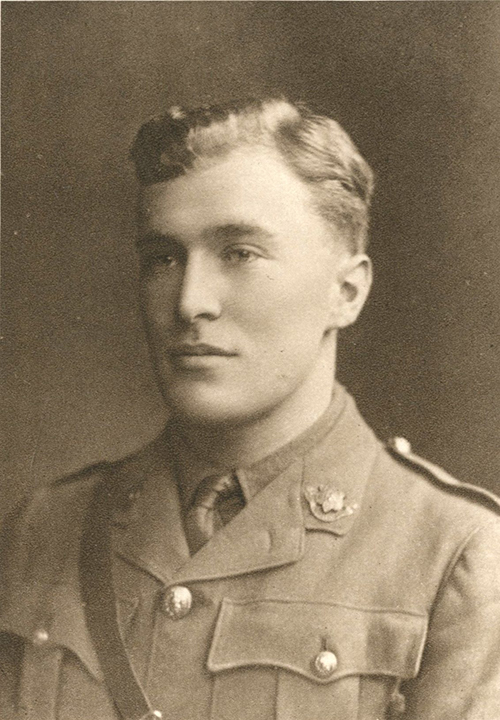
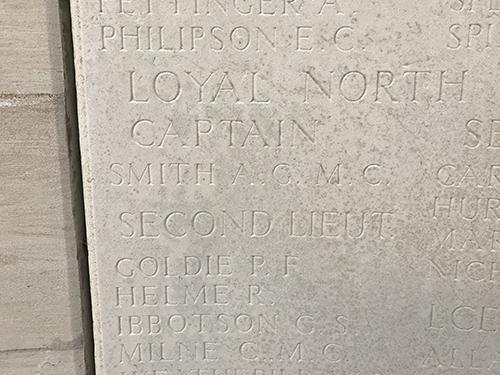
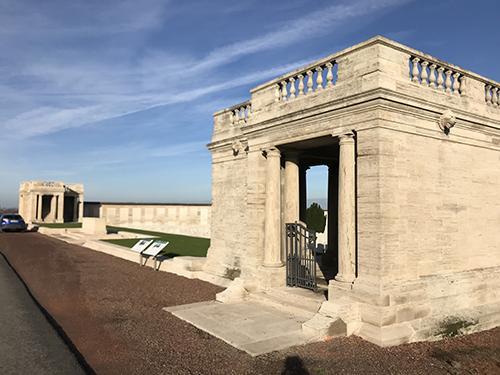

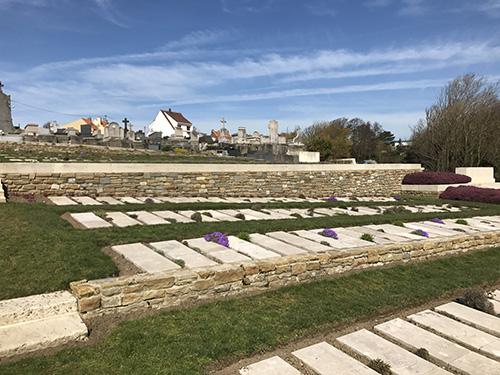
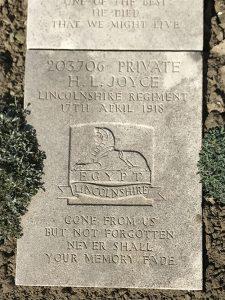
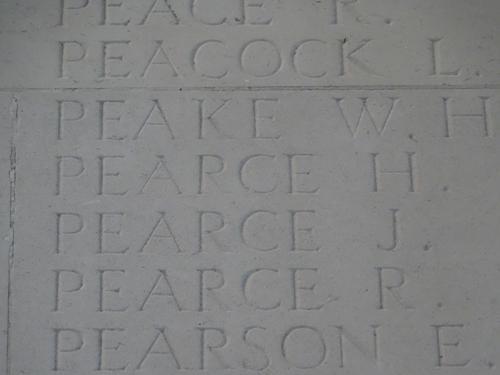
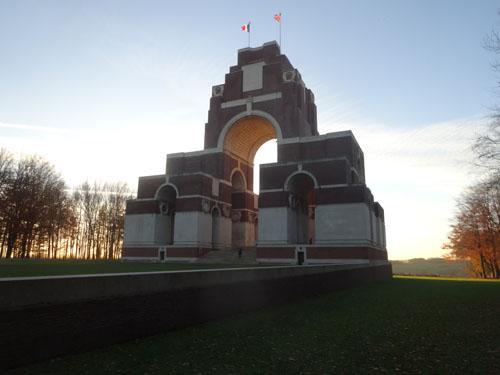
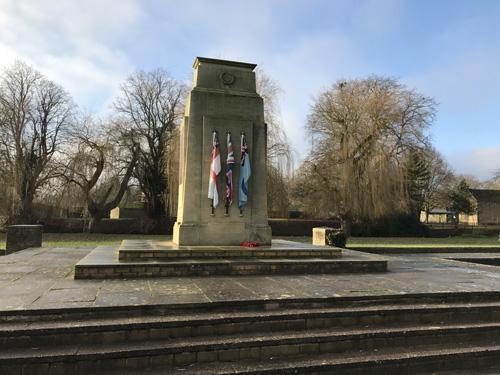
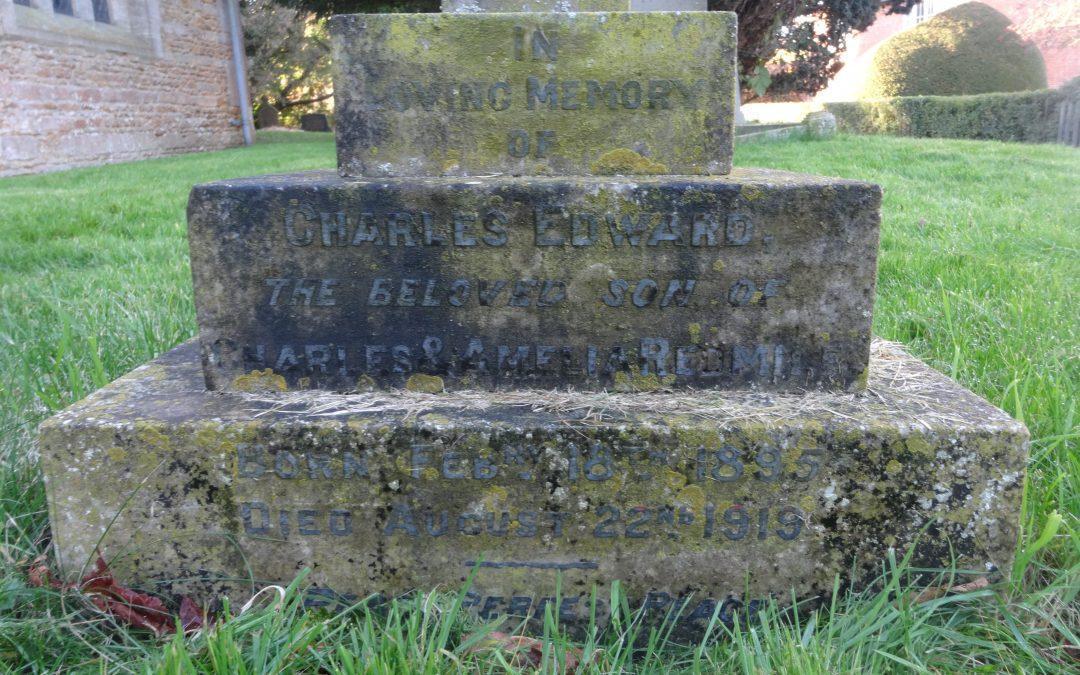
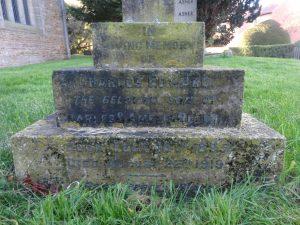
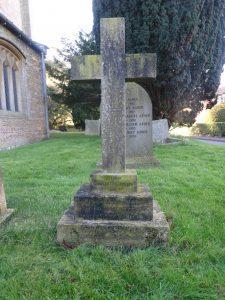
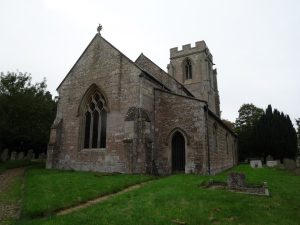
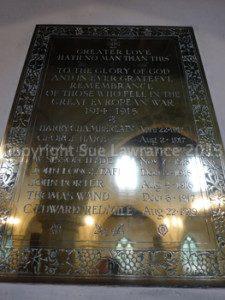
Recent Comments